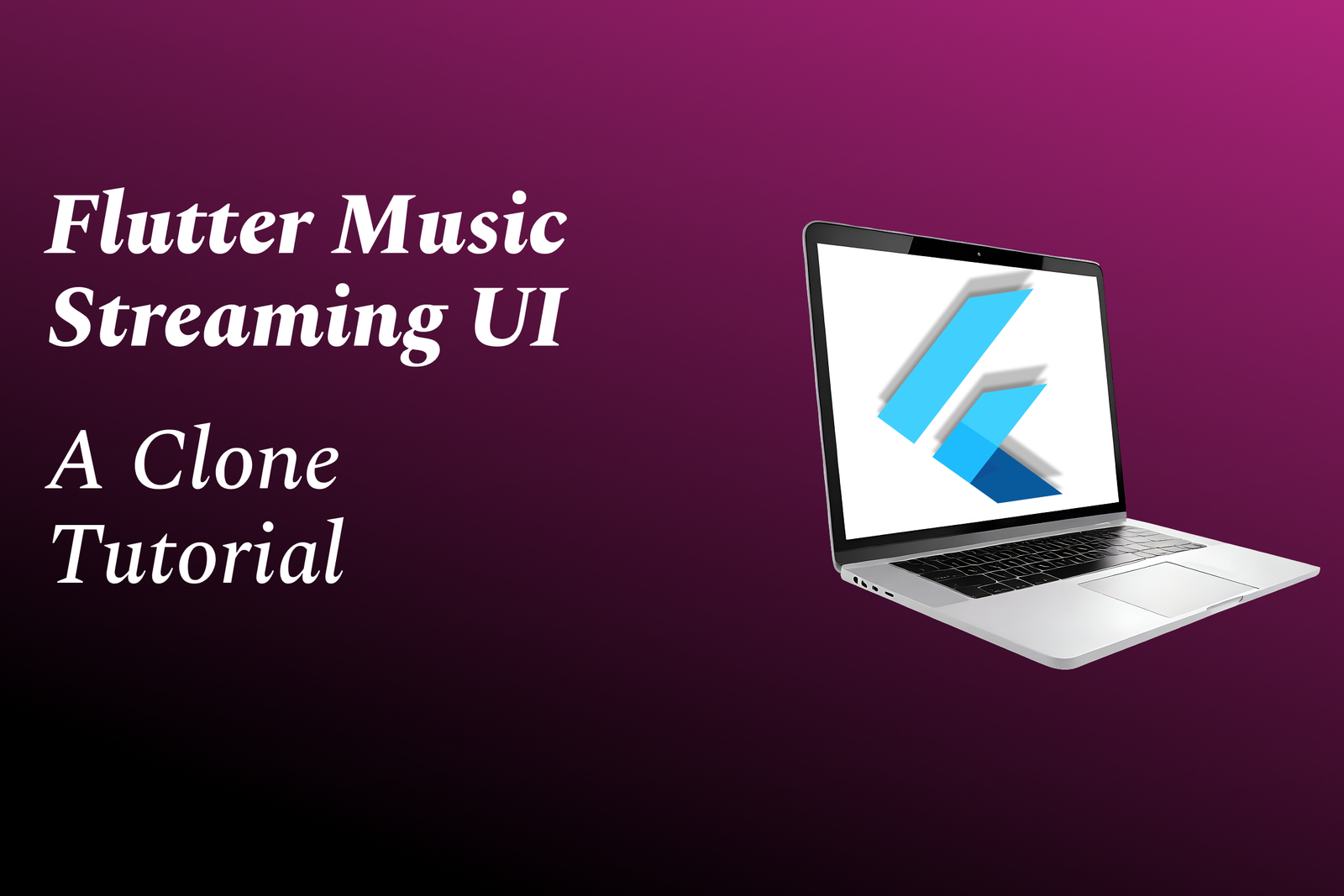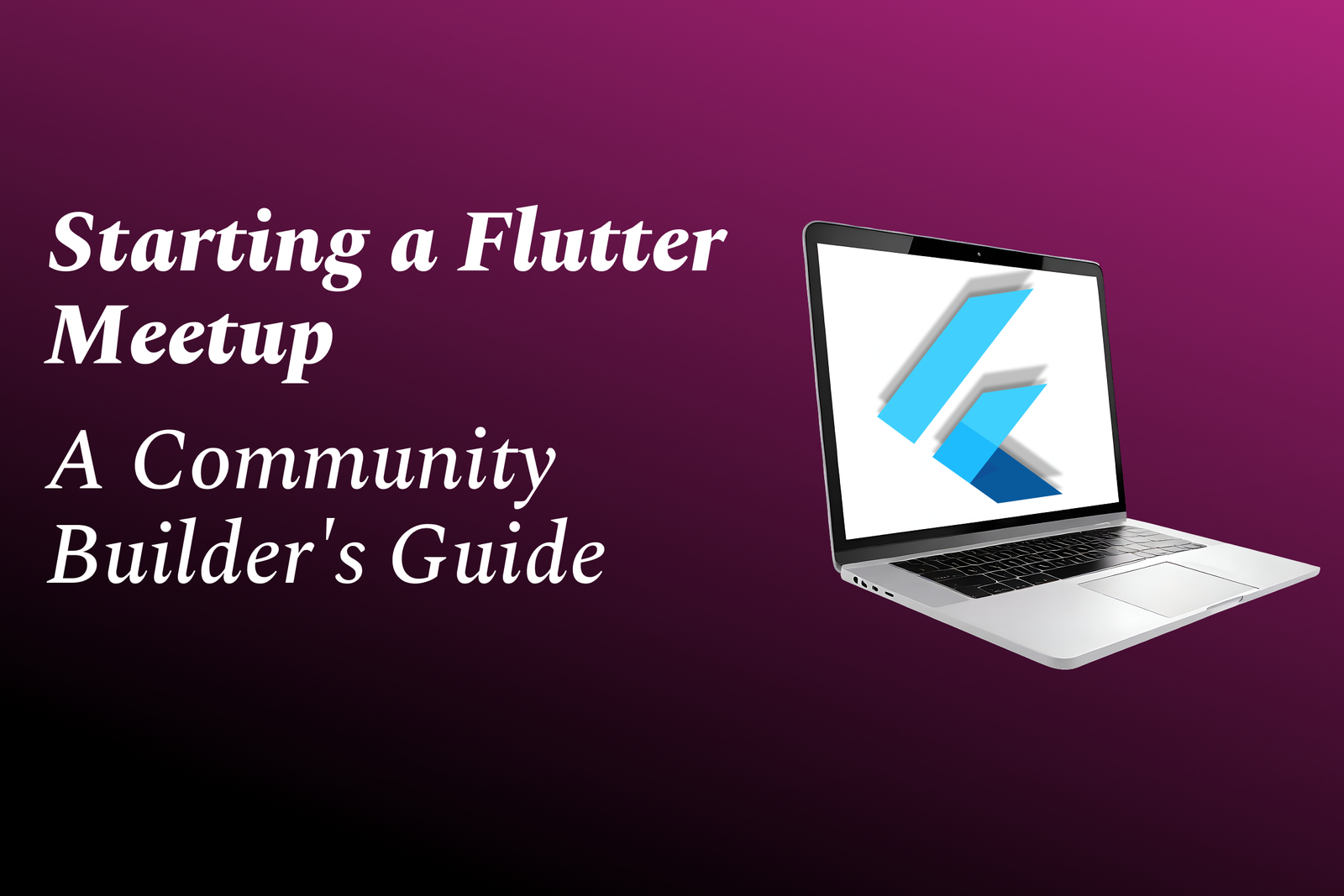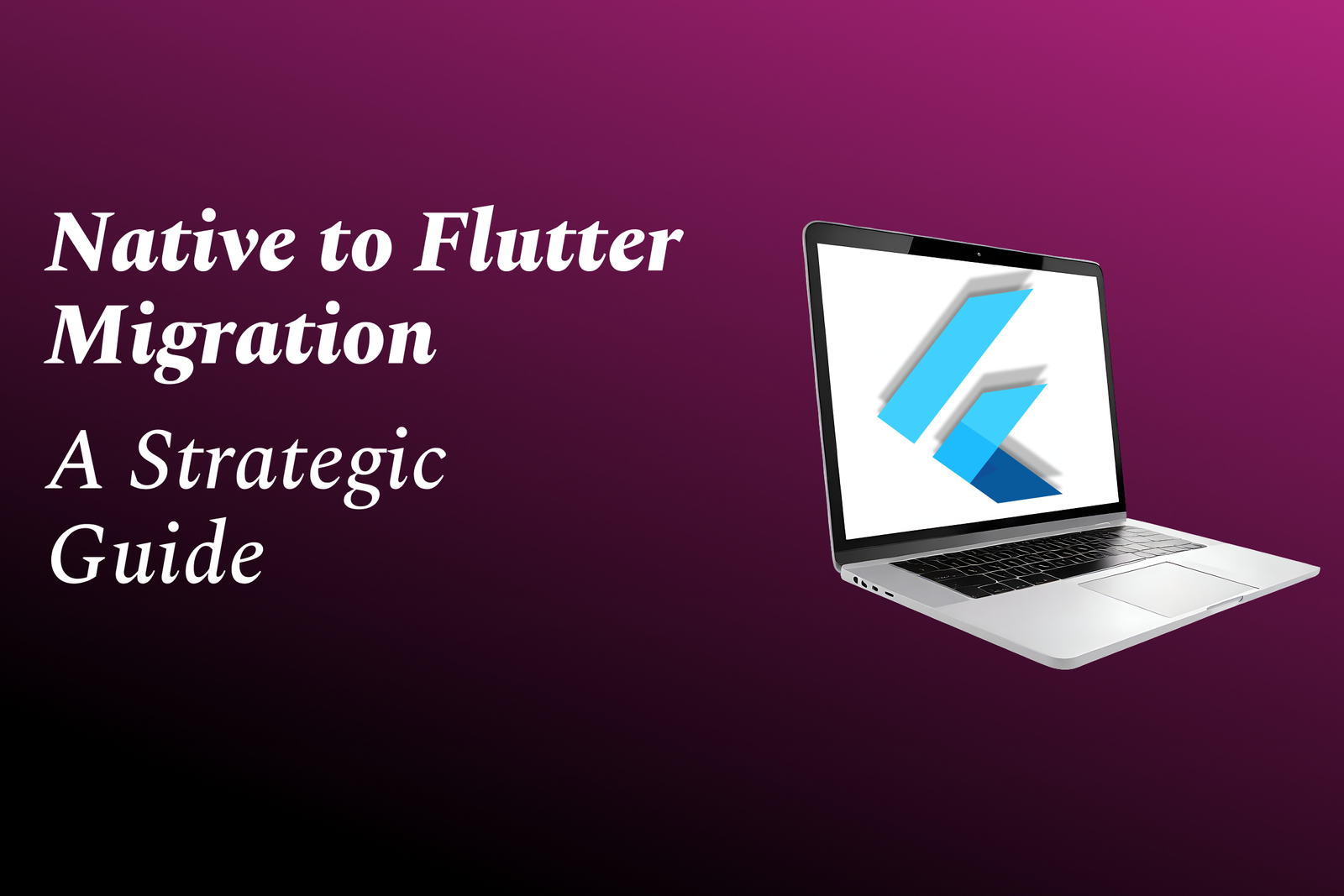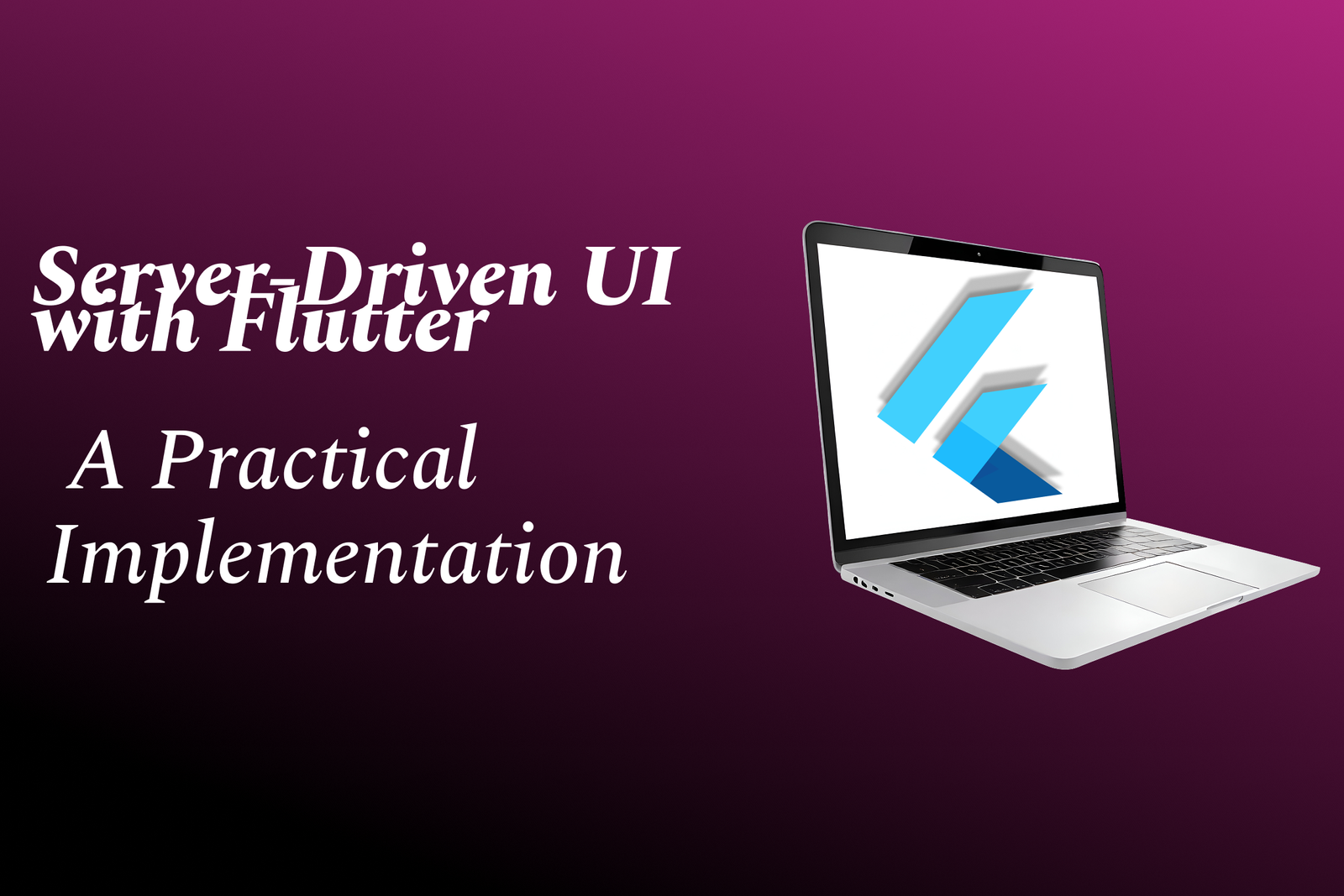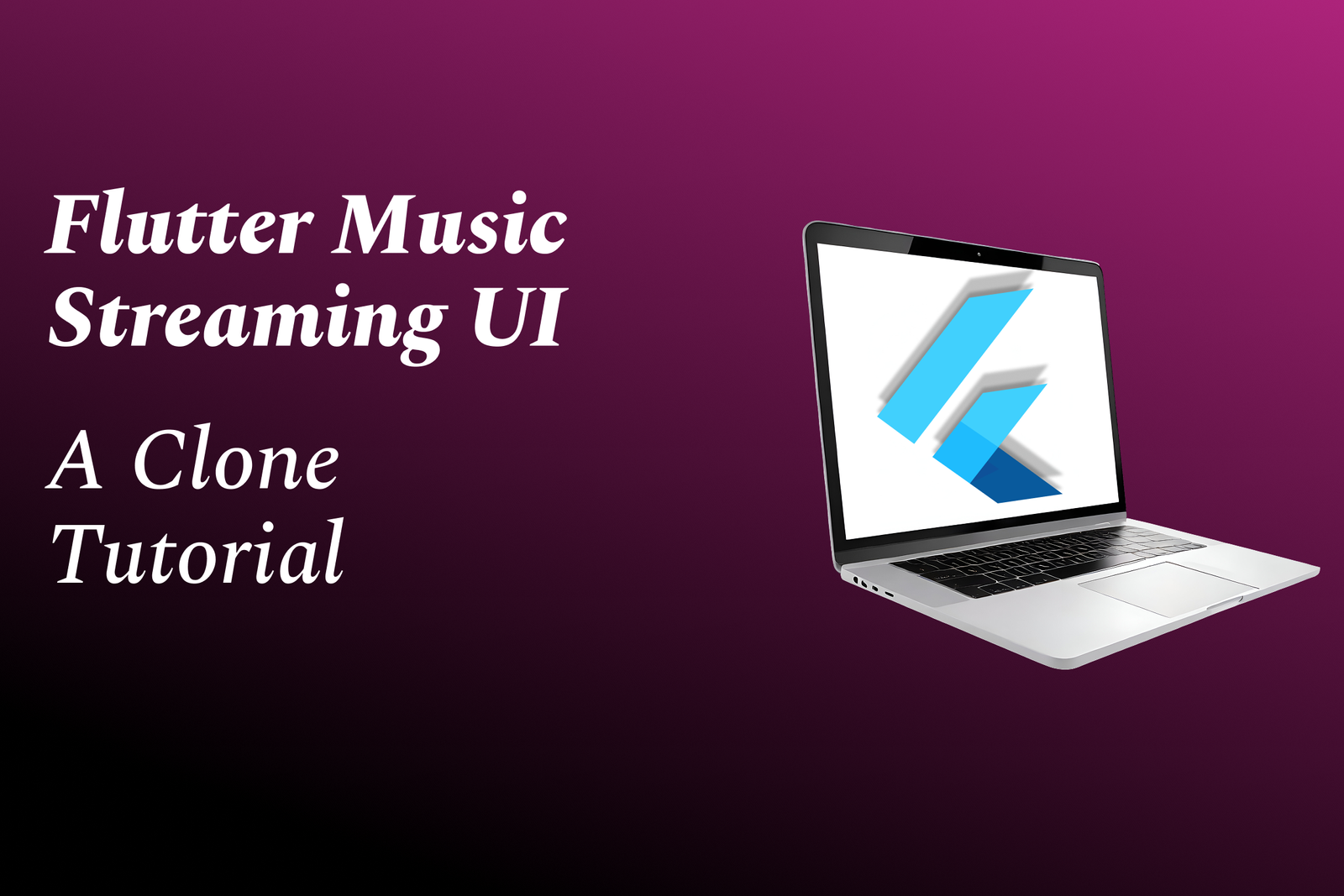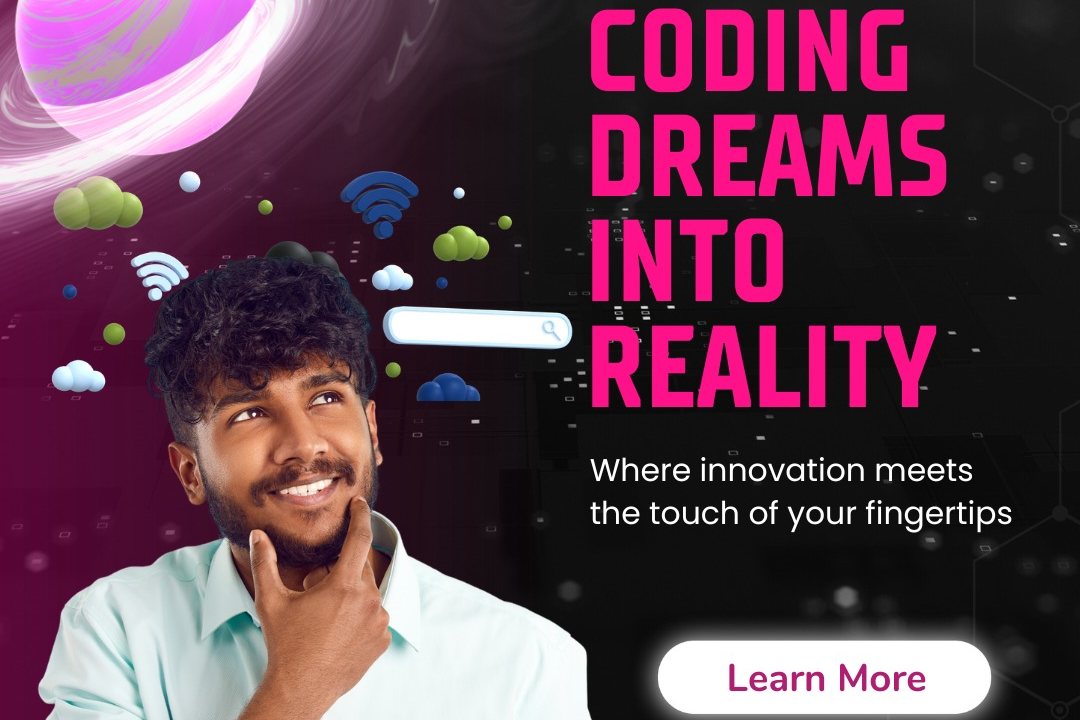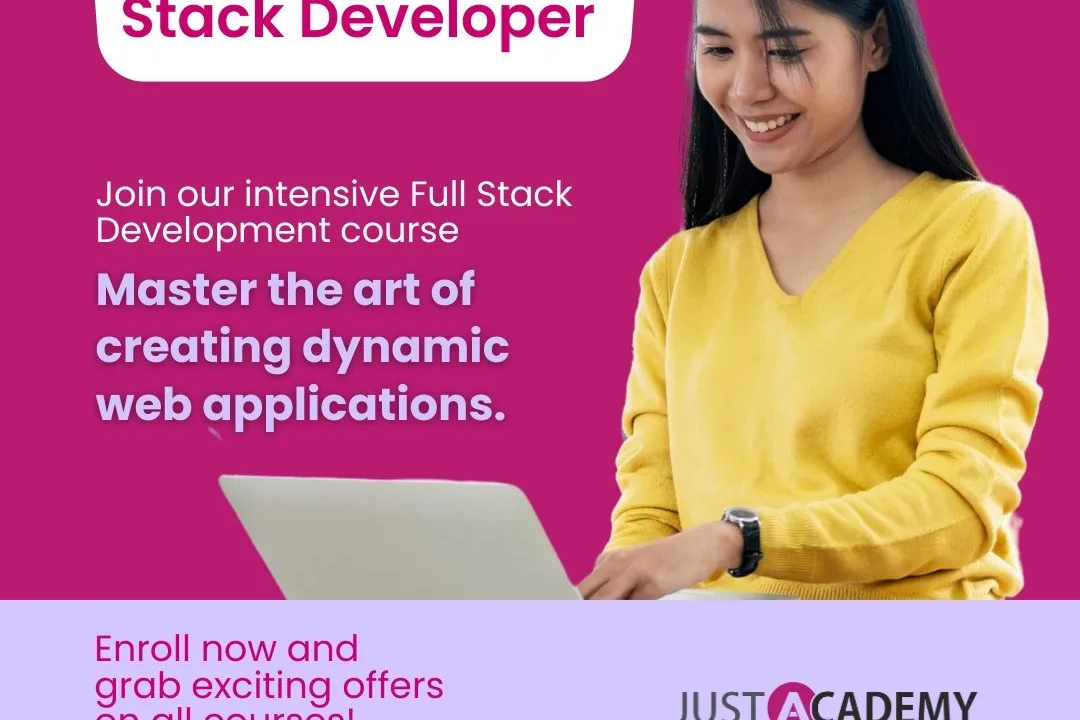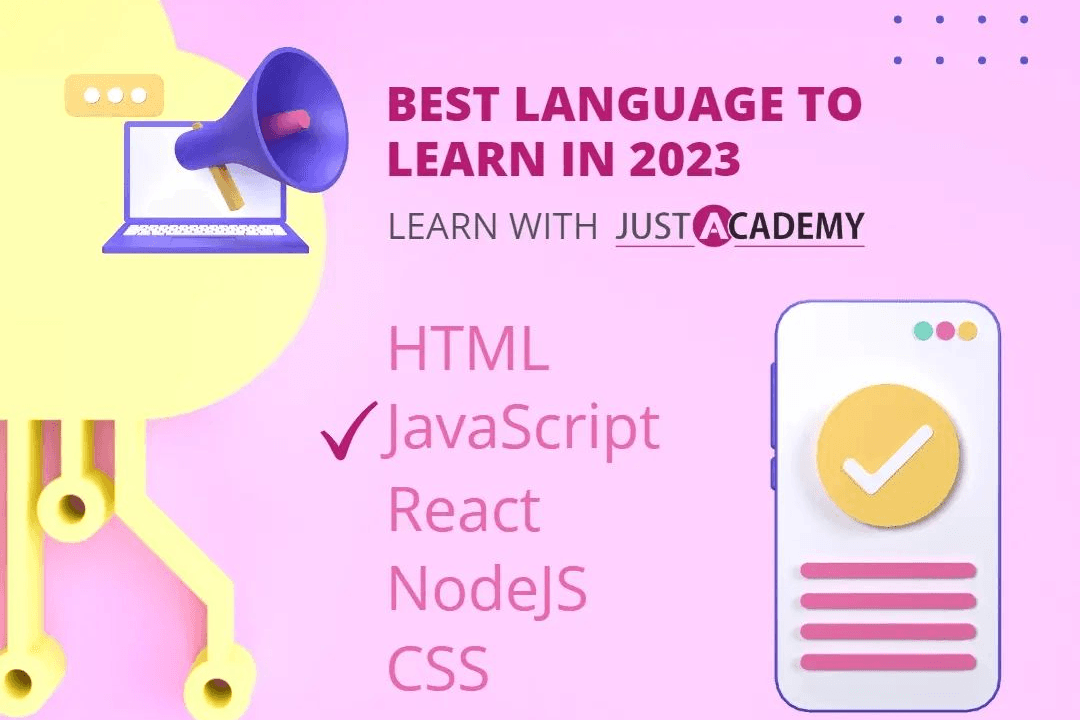Flutter Music Streaming UI: A Clone Tutorial
Flutter Music Streaming UI: A Clone Tutorial from JustAcademy is a hands-on course that guides you through building a polished, Spotify-style mobile interface using Flutter, covering responsive layouts, animations, state management, and audio controls as a real-time project; it’s designed to give practical, portfolio-ready experience and a certification that demonstrates your ability to recreate production-quality UI patterns and ship maintainable cross-platform apps.
Flutter Music Streaming UI: A Clone Tutorial
Flutter Music Streaming UI: A Clone Tutorial from JustAcademy guides you through building a polished, Spotify-style mobile interface so you can learn practical Flutter skills—responsive layouts, custom animations, state management, and audio integration—by working on a real-time project; the hands-on approach helps you produce a portfolio-ready app, follow best practices for maintainable code, and earn a certification that demonstrates your ability to build production-quality, cross-platform UI.
To Download Our Brochure: **https://www.justacademy.co/download-brochure-for-free
**
Message us for more information: **https://api.whatsapp.com/send?phone=919987184296
**
Flutter Music Streaming UI: A Clone Tutorial from JustAcademy guides you through building a polished, Spotify style mobile interface so you can learn practical Flutter skills—responsive layouts, custom animations, state management, and audio integration—by working on a real time project; the hands on approach helps you produce a portfolio ready app, follow best practices for maintainable code, and earn a certification that demonstrates your ability to build production quality, cross platform UI.
Course Overview
Hands-on JustAcademy course to build a Spotify-style Flutter app: responsive layouts, custom animations, state management, audio integration, real-time project, certification.
Course Description
Build a Spotify-style Flutter music streaming UI with JustAcademy: a hands-on clone tutorial covering responsive layouts, custom animations, state management, audio integration, and a real-time project to earn certification on completion.
Key Features
1 - Comprehensive Tool Coverage: Provides hands-on training with a range of industry-standard testing tools, including Selenium, JIRA, LoadRunner, and TestRail.
2) Practical Exercises: Features real-world exercises and case studies to apply tools in various testing scenarios.
3) Interactive Learning: Includes interactive sessions with industry experts for personalized feedback and guidance.
4) Detailed Tutorials: Offers extensive tutorials and documentation on tool functionalities and best practices.
5) Advanced Techniques: Covers both fundamental and advanced techniques for using testing tools effectively.
6) Data Visualization: Integrates tools for visualizing test metrics and results, enhancing data interpretation and decision-making.
7) Tool Integration: Teaches how to integrate testing tools into the software development lifecycle for streamlined workflows.
8) Project-Based Learning: Focuses on project-based learning to build practical skills and create a portfolio of completed tasks.
9) Career Support: Provides resources and support for applying learned skills to real-world job scenarios, including resume building and interview preparation.
10) Up-to-Date Content: Ensures that course materials reflect the latest industry standards and tool updates.
Benefits of taking our course
Functional Tools
1 - Flutter SDK and Dart language
Flutter is the core framework used to build the music streaming UI clone with expressive, high performance widgets and hot reload for rapid iteration.
Dart is the programming language powering Flutter; training covers language features, asynchronous programming, and effective widget composition.
JustAcademy’s training emphasizes best practices for project structure, widget testing, and performance optimization specific to media rich apps.
Hands on labs include building reusable UI components, theming, and adaptive layouts for different screen sizes and platforms.
2) Visual Studio Code and Android Studio
VS Code and Android Studio are the primary IDEs taught for Flutter development, covering setup, debugging, and Flutter/Dart extensions.
Students learn to configure emulators, inspect widget trees, use DevTools, and optimize build settings for fast development cycles.
Training shows editor shortcuts, refactoring tools, and integrated terminal workflows to speed up prototype to product iterations.
Practical exercises include setting up project templates and customizing IDE settings to align with team coding standards.
3) iOS Simulator and Android Emulators
Emulators and simulators let students test the UI across device sizes, pixel densities, and OS versions without physical devices.
Training includes creating and managing AVDs, configuring simulator networking for API calls, and performance profiling on virtual devices.
Modules teach platform specific quirks for audio playback, background behavior, and gesture handling to ensure consistent UX.
Hands on labs require running the music UI on multiple simulated devices and debugging layout or platform specific issues.
4) Figma and Design Handoff Tools
Figma is used to import, inspect, and implement UI designs from the original music app clone, teaching pixel perfect reproduction.
Students learn to extract color palettes, typography, spacing, and component variants, and translate design tokens into Flutter themes.
JustAcademy demonstrates efficient developer designer collaboration, versioning design files, and generating assets for Flutter.
Exercises include recreating screens from design files and implementing responsive variants and interactive prototypes.
5) Lottie and Motion/Animation Tools
Lottie is covered for adding lightweight, vector based animations exported from Adobe After Effects to enhance UI delight.
Training also includes Flutter’s animation library, implicit/explicit animations, and physics based motion for smooth transitions.
Students implement animated album art, playback controls, and subtle motion to match real world streaming app interactions.
Labs focus on performance friendly animation techniques and integrating Lottie with state changes and gestures.
6) just_audio / audioplayers packages
Packages like just_audio and audioplayers are taught to handle low latency audio playback, playlists, and stream management.
Courses include implementing play/pause, seek, buffering indicators, and handling audio focus or interruption on mobile platforms.
Students learn to integrate waveform visualizers, manage background playback, and implement media controls for lock screen and notifications.
Practical projects require building a mini audio engine that connects UI controls to playback state and events.
7) cached_network_image and image optimization
cached_network_image teaches efficient remote image fetching and caching strategies essential for album art and cover images.
Training covers placeholder handling, error states, progressive loading, and memory/disk cache tuning for smooth scrolling lists.
Students implement lazy loading in complex lists, prefetch strategies, and image compression pipelines for production readiness.
Labs include benchmarking image load times and reducing jank in the UI under poor network conditions.
8) flutter_svg and vector asset handling
flutter_svg is used to render scalable icons and vector graphics, ensuring crisp visuals across device densities.
The course covers converting design assets to SVG, optimizing paths, and theming icon colors dynamically in Flutter.
Students learn to manage icon sets, use semantics for accessibility, and fallback strategies when SVG rendering fails.
Exercises include building a dynamic toolbar with vector icons that adapt to theme and layout changes.
9) State management (Provider / Bloc / Riverpod)
Robust state management is essential for syncing playback state, UI, and background services; the course covers Provider, Bloc, and Riverpod.
Students compare approaches, implement global playback controllers, and manage complex UI states like queues, favorites, and playlists.
Training focuses on architecture patterns, testability, and scaling state across nested widgets and asynchronous streams.
Hands on work includes migrating a small app from Provider to Bloc/Riverpod and writing unit tests for state transitions.
10) Firebase (Auth, Firestore, Storage)
Firebase services are taught for rapid backend integration: authentication for users, Firestore for playlist metadata, and Storage for assets.
Training explains security rules, offline persistence, real time updates, and structuring data for efficient queries in a music app.
Students implement sign in flows, user specific playlists, and cloud hosted album art with access control and caching.
Projects include syncing favorites and recent plays between devices and implementing server side rules for data integrity.
11 - REST APIs, Postman, and network debugging
Designing and consuming RESTful APIs to fetch songs, metadata, and recommendations is a core part of the curriculum.
Postman and similar tools are used to test endpoints, mock responses, and collaborate on API contracts with backend teams.
Training covers pagination, caching strategies, error handling, and retry logic tailored to streaming content and metadata.
Labs include building a mock API, integrating it into the app, and handling network edge cases and latency gracefully.
12) Local persistence (Hive, SQLite, shared_preferences)
Local storage options like Hive, SQLite, and shared_preferences are covered for caching playlists, settings, and offline content.
Students learn schema design, migrations, encrypted storage, and choosing the right storage based on access patterns and performance.
Coursework shows how to implement offline first behavior, queue offline actions, and reconcile with server state on reconnect.
Hands on tasks include building an offline capable favorites list and persisting last played positions per track.
13) Pub.dev package management and plugin usage
Managing dependencies with pub.dev, semantic versioning, and safe plugin integration is taught to maintain app stability.
Students learn to evaluate packages for maintenance, compatibility, and native platform support, and how to fork or patch if needed.
Training includes creating internal packages for shared UI components, theming, and utilities to standardize code across projects.
Exercises involve auditing project dependencies, updating packages safely, and resolving breaking changes.
14) Git, GitHub, and collaborative workflows
Source control using Git and GitHub is integral; training covers branching models, commits, pull requests, and code reviews.
Students practice writing clear commit messages, resolving merge conflicts, and setting up protected branches and CI triggers.
JustAcademy emphasizes workflow patterns used in real teams and ties repositories to project evaluations and certifications.
Practical sessions include contributing to a shared course repo, performing code reviews, and preparing release branches.
15) CI/CD (GitHub Actions, Codemagic, Fastlane)
Automating builds, tests, and deployments using GitHub Actions, Codemagic, or Fastlane is taught to deliver reproducible releases.
The curriculum shows how to configure build pipelines for Android and iOS, run widget and integration tests, and sign artifacts.
Students learn to automate release notes, versioning, and deployment to app stores or internal testing tracks.
Labs include creating a CI workflow that runs tests, builds debug artifacts, and deploys to testflight or internal distribution.
16) Testing and Debugging tools (flutter_test, integration_test, DevTools)
Comprehensive testing with unit, widget, and integration tests is part of the program, using flutter_test and integration_test.
Debugging with Flutter DevTools, performance profiler, and logging strategies helps students find layout issues and memory leaks.
The course includes writing mocks, golden tests for UI, and CI integration to enforce test coverage and prevent regressions.
Hands on assignments require building test suites for playback logic, UI states, and network error scenarios.
17) Analytics, Crash Reporting, and Observability
Integrating analytics (Firebase Analytics) and crash reporting (Crashlytics, Sentry) is taught to monitor user behavior and app health.
Students learn to instrument key events like plays, skips, and subscription flows, and to use dashboards to inform product decisions.
Training covers privacy compliant tracking, consent flows, and using logs and breadcrumbs to triage production crashes.
Practical work includes setting up dashboards and creating alerts for regressions after releases.
18) Accessibility and Internationalization (i18n)
Ensuring the music app is accessible using semantics, focus order, and voice over labels is part of the curriculum.
Internationalization covers locale aware formatting, RTL support, and extracting strings for translations and testing localized layouts.
Students implement scalable font sizes, contrast checks, and keyboard navigation where applicable to reach broader audiences.
Exercises include auditing screens for accessibility issues and fixing them to meet platform guidelines.
19) Design to Code best practices and component libraries
Teaching how to convert design systems into reusable Flutter component libraries speeds development and enforces consistency.
Students create a design token system, theme manager, and a widget catalog that supports dark mode and runtime theming.
JustAcademy focuses on maintainable code, documentation, and versioning of component libraries for team handoffs.
Projects include building a shared widget library used across multiple mini projects within the course.
20) Post production tools (Sentry, Firebase Crashlytics, performance tracing)
Post release monitoring with Sentry or Crashlytics and performance tracing helps iterate on UX and stability after deployment.
Training includes setting up release keys, symbolication for native crashes, and proactive performance budgets for UI frames.
Students learn to correlate user reports with traces and logs to prioritize bug fixes and UX improvements effectively.
Labs simulate production issues and guide students through triage, fix, and release cycles as part of real time project work.
21 - DRM and Licensing
Implementing DRM (Widevine, FairPlay) and license management for protected content, plus workflows for encrypted media storage and playback.
Training covers key exchange, license servers, and legal considerations for delivering premium tracks in production apps.
22) In‑App Purchases & Subscriptions (Stripe / RevenueCat / Apple / Google)
Designing subscription flows, entitlements, receipts validation, and server side verification for recurring billing and trials.
Students integrate SDKs, handle edge cases (refunds, cancellations), and test cross platform subscription states.
23) Media Session & Platform Media Controls
Using MediaSession API and platform specific controls to provide lock screen controls, Bluetooth metadata, and system media notifications.
Coursework includes syncing media metadata, handling media buttons, and integrating with car/playback systems.
24) Background Audio & Task Management
Implementing robust background playback with foreground services (Android) and background modes (iOS), plus wake locks and battery optimizations.
Hands on labs cover resuming playback after interruptions, scheduling downloads, and background sync tasks.
25) Push Notifications & Real time Messaging (FCM, WebSockets)
Configuring push notifications for new releases, recommendations, and real time events; leveraging WebSockets for low latency presence and chat.
Students learn notification types, deep links, action buttons, and handling notifications when app is killed.
26) Streaming Protocols (HLS, DASH) and Adaptive Bitrate
Integrating HLS/DASH streaming for adaptive quality, segment handling, and seamless quality switching on network changes.
Training includes player configuration, DRM integration, and optimizing startup latency and buffering.
27) CDN, Edge Caching and Media Storage Architecture
Designing a performant media delivery pipeline using CDNs, signed URLs, cache control, and origin scaling strategies.
Projects include setting up S3/Cloud Storage, CDN invalidation, and cost performance tradeoffs.
28) Backend Architecture, Microservices & APIs
Building scalable backends for catalog, user data, recommendations, and streaming endpoints using microservices or serverless patterns.
Students design API contracts, rate limiting, and data partitioning strategies for high throughput media apps.
29) GraphQL, gRPC & API Gateways
Using GraphQL for flexible client queries or gRPC for low latency service to service communication; API gateway patterns for routing and auth.
Training compares approaches and shows how to choose for developer ergonomics and performance.
30) Recommendation Systems & Machine Learning
Implementing collaborative filtering, content based recommendations, and offline/online training pipelines for personalized playlists.
Hands on labs cover feature engineering, A/B testing recommendations, and integrating ML models into the app.
31 - Personalization & User Profiling
Creating personalized experiences—curated home screens, dynamic playlists, and contextual suggestions—while respecting privacy.
Students implement profile driven UX, consent handling, and lifecycle of personalization data.
32) Privacy, Compliance & Security (GDPR, CCPA, encryption)
Implementing consent flows, data minimization, encryption at rest/in transit, secure token handling, and audit logging for compliance.
Course covers legal basics, cookie policies, and secure storage of user credentials and payment tokens.
33) Load Testing, Performance Engineering & Scalability Testing
Using tools (JMeter, k6, Locust) to simulate traffic spikes, streaming load, and CDN stress to validate system resilience.
Students learn to set SLAs, create performance budgets, and conduct chaos tests to harden production systems.
34) Feature Flags, Rollouts & A/B Testing
Managing progressive rollouts with feature flags (LaunchDarkly, Firebase) and running controlled experiments to validate product changes.
Hands on work includes designing metrics, instrumentation, and safe rollback practices.
35) Observability: Tracing, Metrics & Logs (Prometheus, Grafana, Jaeger)
Setting up end to end observability: metrics, distributed tracing, structured logs, and dashboards for SLOs and incident response.
Training shows how to correlate client side telemetry with backend traces to triage playback issues.
36) Serverless & Cloud Functions (AWS Lambda, GCP Functions)
Leveraging serverless for webhooks, transcoding triggers, auth flows, and lightweight APIs to reduce operational overhead.
Labs include building event driven pipelines for asset processing and user notifications.
37) Containerization & Deployment (Docker, Kubernetes)
Packaging backend services, managing deployments, autoscaling, and CI pipelines for cloud hosted services powering the app.
Students practice deployment manifests, secrets management, and blue/green or canary releases.
38) Web App (PWA) & Desktop (macOS/Windows/Linux) Considerations
Optimizing Flutter Web and desktop builds, implementing offline PWA behaviors, responsive layouts, and desktop specific integrations.
Course covers platform specific packaging, installer creation, and performance tuning for non mobile clients.
39) Native Platform Channels & Custom Plugins
Writing platform channels or custom plugins for deep native integrations (Bluetooth LE, native DRM, low level audio APIs).
Students build and publish shared plugins, ensuring cross platform compatibility and test coverage.
40) Developer Productivity, Code Quality & Linting (Static Analysis, SAST)
Integrating linters, formatters, static analysis, dependency scanning, and SAST tools into CI to maintain code health and security.
Training emphasizes code review practices, architectural docs, and maintaining a component library for long term productivity.
JustAcademy includes hands on projects and certification tracks that cover these advanced topics, so learners can apply them in real time projects and portfolios. If you want, a focused expansion on any of these topics can be prepared as a module description or lab outline.
Browse our course links : https://www.justacademy.in/all-courses
To Join our FREE DEMO Session: https://www.justacademy.in/register-for-course-demo
This information is sourced from JustAcademy
Contact Info:
Roshan Chaturvedi
Message us on Whatsapp: https://api.whatsapp.com/send?phone=919987184296
**Email id: mailto:info@justacademy.co
**
https://www.justacademy.co/blog-detail/server-driven-ui-with-flutter:-a-practical-implementation
https://www.justacademy.co/blog-detail/starting-a-flutter-meetup:-a-community-builder's-guide
https://www.justacademy.co/blog-detail/native-to-flutter-migration:-a-strategic-guide
https://www.justacademy.co/blog-detail/flutter-impeller-vs.-skia:-a-deep-dive-into-the-new-rendering-engine
https://www.justacademy.co/blog-detail/gamification-in-flutter:-engaging-your-users
Flutter Spotify Clone UI Tutorial: Build a Music Streaming App with Dart, Animations & Real-Time Project
Build a Spotify-Style Music Streaming App UI in Flutter — Step-by-Step Clone Tutorial with Dart, Animations & Real-Time Project
Build a Spotify-Style Music Streaming UI in Flutter — Step-by-Step Clone Tutorial with Dart, Animations & Real-Time Project
Build a Spotify-Style Music Streaming UI in Flutter — Step-by-Step Clone Tutorial with Source Code, Animations & Real-Time Project
